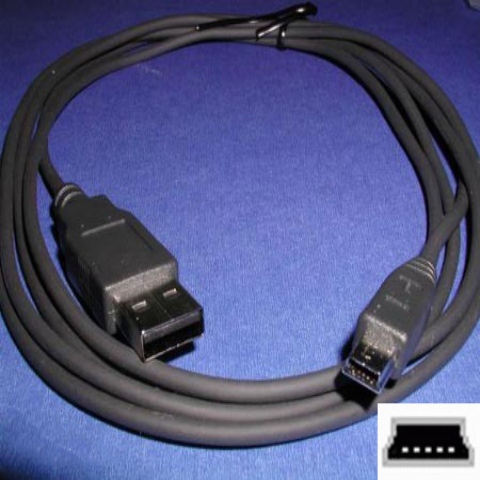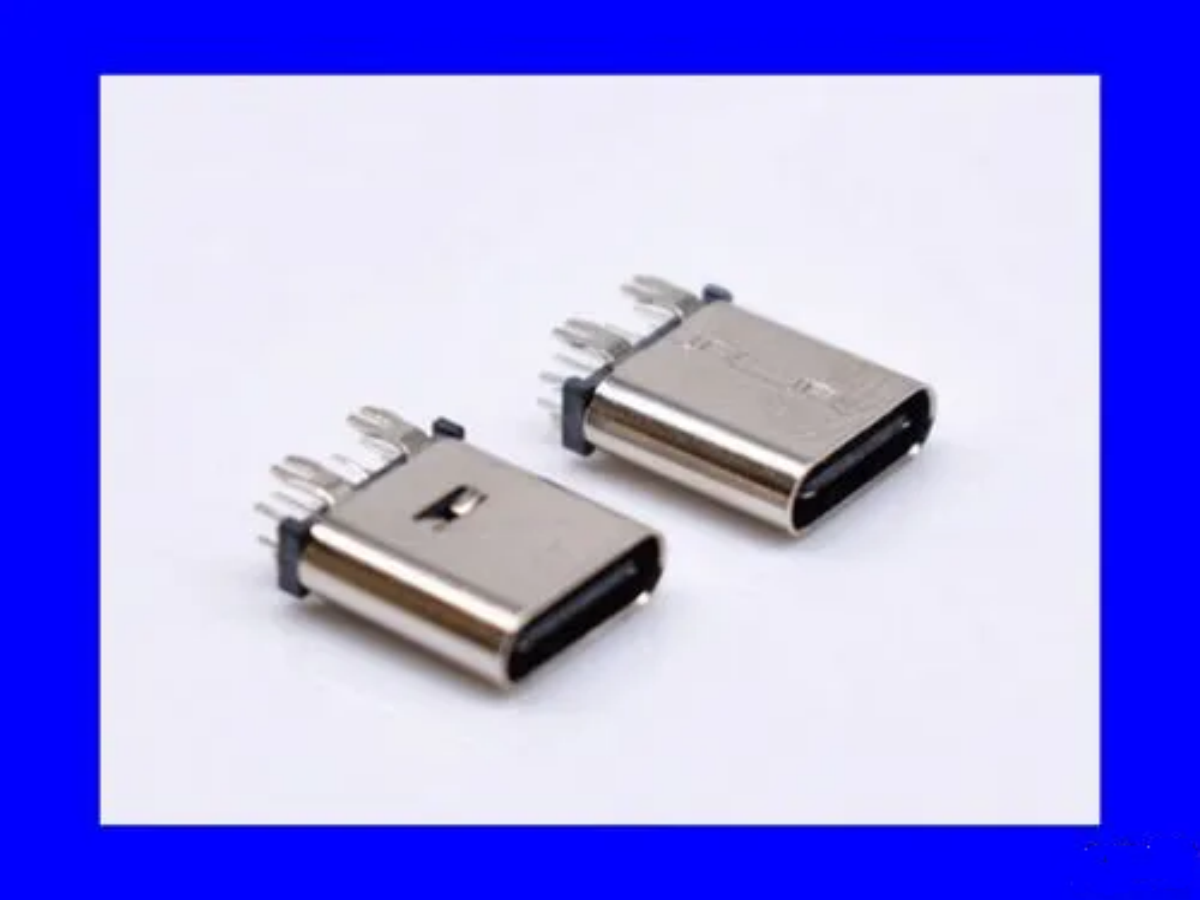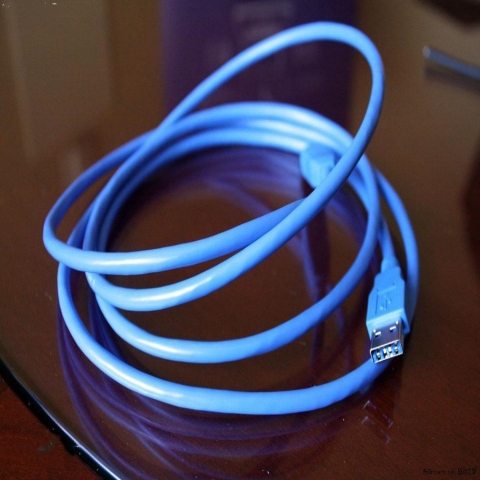Everything You Need to Know About USB Connectors and How to Choose the Right One
USB connectors are used to connect various electronic devices and computers. Depending on the device, different types of USB connectors may be required. It's important to make sure you use the right type of cable for each device in order to ensure proper connection and data transfer. Here's a comprehensive guide to help you out, including the overview of a USB connector, different types and related features, what they are used for and how to choose the right one.
What is A USB Connector
USB is the abbreviation of Universal Serial Bus. USB is a serial bus standard used to connect computer systems and external devices, which is used to standardize the connection and communication between computers and external devices. It was jointly formulated by computer companies and communication companies such as Intel, Compaq, Digital, IBM, Microsoft, NEC and Northern Telecom in 1995, and gradually formed the industry standard for computer and peripheral communication. It has been extended to photographic equipment, digital television (set-top box), game consoles and other related fields. The latest generation is USB4, with a transmission speed of 40Gbit/s, a three-stage voltage of 5V/12V/20V, and a maximum power supply of 100W. The new Type C interface allows forward and reverse blind insertion.
The working principle of USB can be summarized as follows: first, the host recognizes the USB flash disk, and then starts to transmit data.
The Host Recognizing the USB Flash Disk
Let's talk about how the USB host recognizes a USB key. When you plug a USB stick into the computer, some changes will occur on the USB interface of the computer. The USB flash drive will pull up DP (D -) to keep DP and DM in a J state (that is, DP is high and DM is low). The USB host chip of the computer motherboard detects this J state (DP (D -) is pulled up) and knows that there is a device connected (the host and device mentioned here refer to the USB interface chip connected at both ends of the USB cable). The computer driver will identify the connected device, which is called enumeration. This process is to let the computer know what device is connected (USB flash drive, USB mouse, USB keyboard, or whatever).
The Host Transmitting Data
Then look at how USB data is transmitted on DM and DP. When the host detects that there is a device connected, the driver will first carry out the necessary procedures for the device to identify its speed (there are many protocols in this process, which should be studied carefully), and then reset. After that, it starts to send 1ms interval SOF packets (full speed) or 125us interval SOF packets (high speed) on the bus (DM, DP).
USB data is sent in the form of packets, which have a fixed format. It starts with a sync (synchronous synchronization) and ends with an eop (end of packet). The same is true for SOF packets. The PID (packet ID) is the type of package that describes what the package is.
Click here to learn more connectorcs.
What Are the Different Types of USB Connectors And Related Features
With the popularity of various digital devices, especially MP3 and digital cameras, there are more USB devices around us. However, although these devices all use USB interfaces, the data lines of these devices are not completely the same. These data cables are the same at the end of connecting to the PC, but when connecting to the device end, different interfaces are usually used for the sake of volume. The following is a brief introduction to various applications of the Mini type sub interface.
- B-5Pin USB

This kind of interface can be said to be the most common one. Because of its excellent anti-misplug performance and small size, it is gaining more and more attention from manufacturers. Now this kind of interface is widely used in card readers, MP3 players, digital cameras and mobile hard disks.
- B-4Pin USB
This interface is commonly used in digital products of the following brands: Olympus C series and E series, most of Kodak's digital cameras, Samsung's MP3 products (such as Yepp), Sony's DSC series, and Compaq's IPAQ series.
There is another form of Mini B type 4Pin, which is Mini B type 4Pin Flat. As the name implies, this interface is more flat than Mini B type 4Pin, and is also widely used in equipment.
- B-8Pin USB

Mini B 8Pin Round
Compared with the previous common type, the original D-type connector is changed into a round connector, and a bulge is designed to prevent misplugging on one side.
This kind of connector can be seen in some Nikon digital cameras, and CoolPix series is more common. Although Nikon has always insisted on using this interface, some newer models, such as the D100 and CP2000, also use the most popular Mini B 5Pin interface.
- B-8Pin-2 × 4 USB
This interface is also a relatively common interface. For example, iRiver's famous MP3 series, including 180TC called "Iron Triangle", and many other products of this series use this interface. The application range of this interface is also quite wide. However, after the iRiver has been completely changed from the 3XX series to the Mini B type 5Pin interface, this specification is obviously less eye-catching than the Mini B type 5Pin.
- Micro USB
It conforms to the USB2.0 specification and supports data transmission rate of 12Mbit/s. The module connects the control pins according to the Microport interface to facilitate the connection with the main controller that supports the Microport interface.
At the ITU ITU-T Fifth Research Group (SG5) plenary meeting held in Geneva, Switzerland, on October 26, 2009, the framework standard of "power adapter and charger scheme for general mobile terminals and other ICT equipment" was discussed and adopted, and the application for approval was applied. This actually means that mobile phone charger standards will be unified all over the world.
- Type-C
Type-C is a new form of USB interface, which is accompanied by the latest USB 3.1 standard. Released by USB-IF in August 2014, it is a new interface developed by the USB standardization organization to solve the long-term problems of USB interface, such as non-uniform physical interface specifications and one-way power transmission. It integrates charging, display, data transmission and other functions. The biggest feature of the Type-C interface is that it supports the insertion in two directions, both positive and negative. It formally solves the worldwide problem of "USB can never be inserted", and the front and back are inserted randomly.
- Lightning
Apple's proprietary connector, not to be confused with the USB standard, is used on iPhones, AirPods and some iPad models. It is similar in size to USB-C and has been included in most Apple devices since 2012.Older Apple products feature the 30-pin proprietary connector, while newer iPad Pro models use USB-C. If you're looking for more information on cables, adapters and ports used in Apple devices, check out our article on the topic.
The Mini and Micro connectors are categorized as smaller versions of the type-B connector, even though they do not have "type-B" in their name. The most commonly used cables that require replacement are micro-USB, USB-C, and Lightning.
A Guide to Buying the Right USB Cable for Your Device
If you have an older Android phone or tablet, it likely makes use of a micro-USB cable. Also those deep in Apple's community or with USB-C ports on their phones will require to utilize micro-USB sometimes, nonetheless. It's still seen on some battery loads, Bluetooth audio speakers, and so on.
Any individual that buys a lot of gizmos will certainly build up a collection of micro-USB cable televisions over time, as they're packed in with nearly every device. Considering that they're typically compatible, you can utilize various cables for your numerous devices.
When it's time to acquire a new cord, it's alluring to select the most affordable choice. Nonetheless, a lot of the moment, this is a poor idea. Improperly made cords can create you all type of concerns. These array from nuisances like sluggish charging as well as unreliable performance, to significant troubles like damaging and also even becoming a fire hazard.
USB-C was initially plagued by cables that were incorrectly configured and could potentially damage devices. Thankfully, this is no longer the case with modern cables, however it's still important to ensure your charger is safe before using it. To do so, you can refer to the link provided in the input text.
It's better to invest in a quality cable from a reputable brand, even if it costs slightly more. Doing so will ensure that you get the best performance and reliability out of your phone.
Cable length is an important factor to consider when choosing a charging cable. While shorter cables are more portable, they may require you to sit close to the power outlet while your phone is charging. Conversely, cables that are too long can be difficult to manage and carry, may become tangled more easily, and present a potential tripping hazard.
A three-foot charging cable is ideal for convenience. It allows you to keep your phone in your hand while it's connected to a power source in your bag or pocket, so you don't have to worry about leaving it behind. Six-foot charging cables are great for those who need to use their device away from the outlet while it's plugged in. They are long enough to reach from the wall to your desk, making them incredibly practical.
USB connectors are essential for connecting devices to your computer or laptop. It is important to make sure you get the right USB connector for your device in order to ensure proper data transfer and avoid any compatibility issues. Different types of USB connectors are available so it is important to do your research and choose the one that best suits your needs.
Dinglian, as a leading manufacturer of precision mold equipment in China, has more than 15 years of export experience. At present, it mainly sells various types of USB connectors and hardware plastic shells. The USB connector has these models as follows: M12, M15, M16 A16, M20 A20, Y type cable connectors, junction boxes, Quick connectors and anti-siphon waterproof connectors. Welcome to visit our official website: https://wuhudinglian.v3.myfunpinpin.com/.


